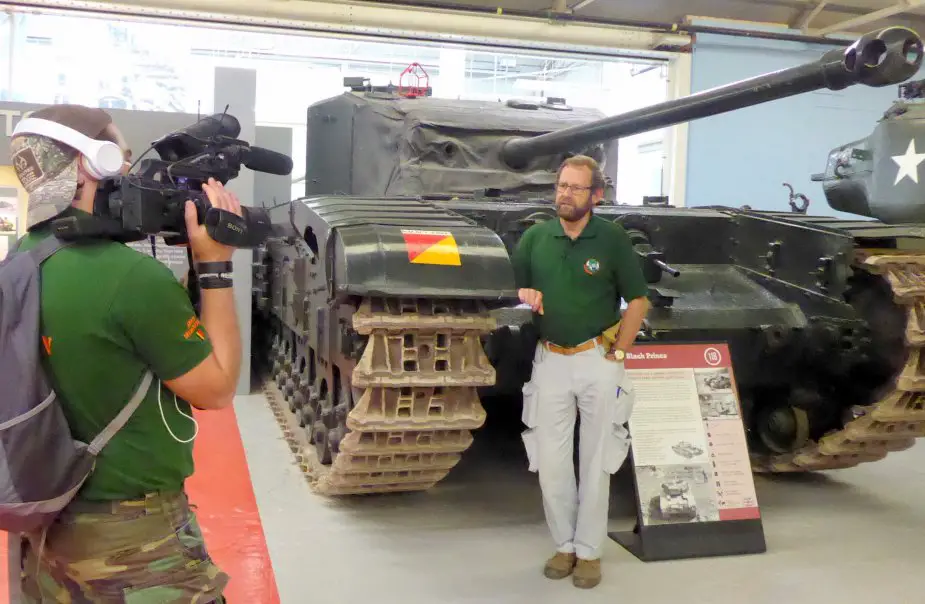Army Recognition is proposing an unusual video: the main battle tank history, from Leonardo da Vinci’s project in 1485 up to the current Challenger 2 of the British army. A visit to the fantastic Tank Museum located in Bovington is a great way to illustrate it. A team of Army Recognition attended the preparation of the great Tankfest 2018 and enjoyed this golden opportunity to invite you to a short – but interesting – journey through more than twenty centuries.

The Tank Museum located at Bovington (UK) displays a fantastic collection of armored vehicles, mainly tanks, ranging from World War 1 to nowadays with the Challenger 2 MBT. Army Recognition takes advantage of them to summerise their history on its web TV (Picture source: Army Recognition)
In spite of the fact that it was first involved in a conflict during World War 1 with the British Mk. IV and V tanks, and the French FT17 – very slow tanks designed only to open the way to infantry charges –, the battle tank revealed its own nature and possibilities during World War 2, a war that saw rapid and dramatic improvements of this weapon, sometimes leading to crazy projects of which only very few actually went further than the drawing board.
A new ad splendid room was inaugurated in March 2018, displaying superb scale models and drawings of somehow “tanks” dating back to the Antiquity up to Cold War project, even anticipating the year 2050. Imagined in 1942 to please Hitler’s addiction to enormous war instruments, the craziest German project of a “Landcruiser” tank weighing 1,000 tons with two 280mm guns as main armament never went further than the drawing board.
Dating back to Antiquity, a redoubtable weapon saw a terrible development during World War 1 and even more World War 2: the flamethrower. The Tank Museum displays what is probably the last surviving example of an Italian tankette in flamethrower version, still with its original trailer. It was captured by the British army in the North African campaign.
While more and more manufacturers are currently developing hi-tech unmanned ground vehicles (UGVs), the Germans already used dozens of them from mid-WW2: the Goliath was a small wire-guided vehicle designed to explode at the contact of an enemy tank.
The Sherman is the most emblematic tank of WW2 on the Allied side. Not only was it manufactured in several versions to accommodate various guns and engines, but it also served as a basis for the “Hobart’s funnies”, a series of special-purpose tanks designed to facilitate the landing in Normandy and the ensuing combats.
The Tank Museum displays a fantastic collection of German heavy Tiger tanks – including a Porsche prototype – and an Elefant tank destroyer. The Allies, including the Soviets, didn’t have equivalents but won by outnumbering the Germans.
The first British tank to be mass-produced after World War 2 was the Centurion which saw action even with the Israeli army in its wars against its Arab neighbours. The Centurion was followed by the Conqueror, the Chieftain, the Challenger 1 and, currently in service, the Challenger 2. All of them are displayed in the museum.
So, thanks to the Tank Museum, more than twenty centuries of “tanks” or assimilated war machines are illustrated, giving the visitor a captivating overview of what human brains imagined to make more and more powerful weapons mobile.















